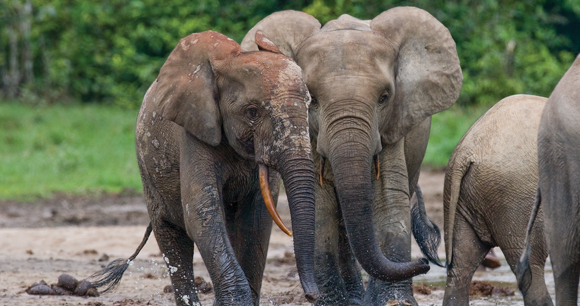Forest elephant populations throughout Central and West Africa have declined from 700,000 to 100,000 animals over the past several decades, primarily due to poaching and habitat loss. In Central Africa alone, scientists have reported a 62 percent decline in forest elephants between 2002 and 2011.

The ecological cost of this decline is alarming, given the role of elephants in forest ecosystems, including through seed dispersal, nutrient recycling, herbivory, trampling, and carbon sequestration. Forest elephants facilitate carbon capture by removing (through feeding and trampling) small trees, thereby favoring larger trees that store large quantities of carbon, preventing its release into the environment.
Such impacts have economic value, according to an August 2020 working paper by Ralph Chami (an economist at the International Monetary Fund) and colleagues, published by Duke University’s Economic Research Initiatives. Combining the carbon sequestration provided by the current 100,000 elephants and the contribution from future generations these elephants would produce, the authors calculate a present value of over $176 billion ($1.76 million per existing elephant). That value would be even higher if poaching were eliminated. Without poaching, the population would grow at a rate of 3.6 percent rather than the current 1.9 percent, and the population’s value would soar to over $375 billion ($3.75 million per existing elephant). In other words, according to the authors, poaching is reducing the economic value of forest elephants by nearly $200 billion. And these values do not even factor in the other ecological and economic (e.g., ecotourism) services the elephants provide.
Thus far, the continent-wide collapse in forest elephant numbers and the associated ecological damage tied to population declines have not prevented poaching. Perhaps a recognition of the tremendous economic value of the elephants will spur governments to protect the elephants and their habitat.